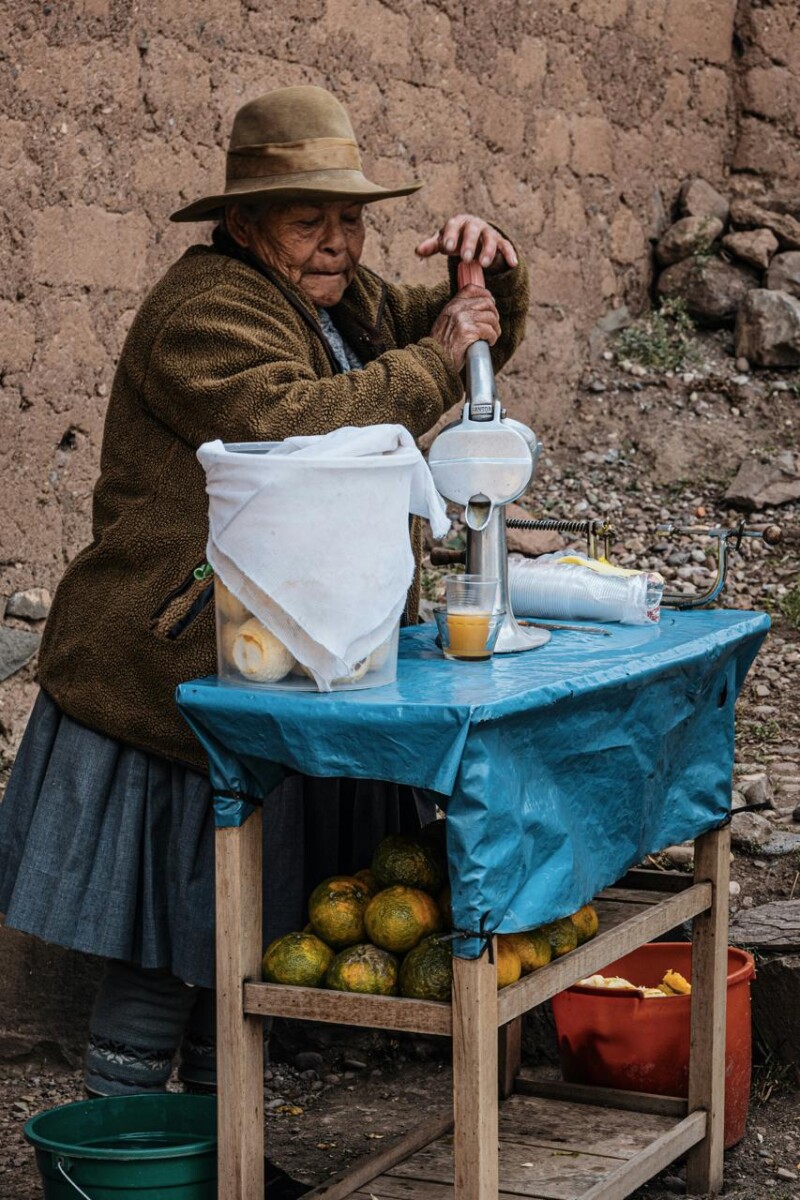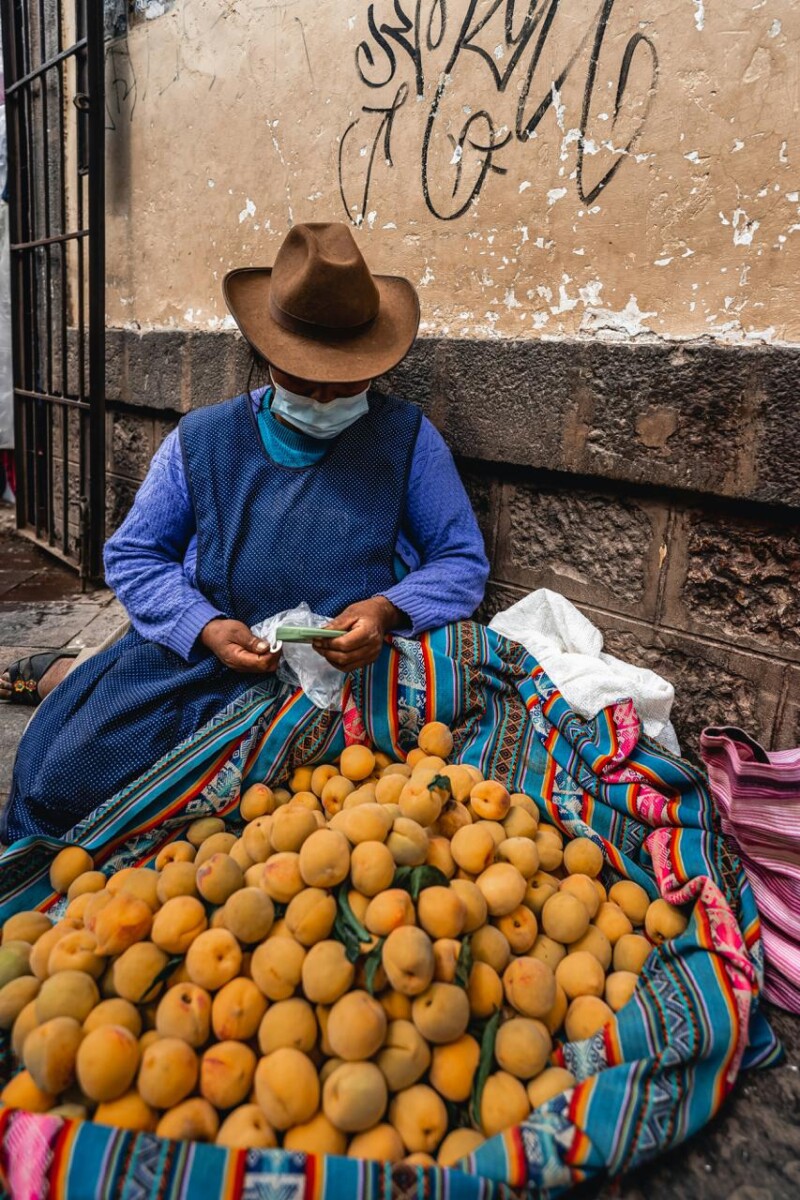Peru is a country located in the western part of South America, known for its rich history, cultural diversity, and stunning landscapes. Its territory ranges from the Pacific coast to the vast Amazon rainforest, crossing the majestic Andes mountain range. This Andean country has a historical heritage that dates back to ancient civilizations such as Caral, one of the oldest on the continent, and the Inca Empire, whose capital was the impressive city of Cusco.
Peru’s cultural diversity is reflected in its traditions, festivals, and food…
So today we are sharing some of the most popular dishes from this country, so you can enjoy its extensive and famous cuisine if you choose it as a destination for your volunteering experience with Cooperating Volunteers.
Peruvian cuisine is one of the richest and most varied in the world, famous for its diversity of flavors, ingredients, and culinary techniques. This richness is due to the confluence of various cultures that have influenced its cuisine, including indigenous, Spanish, African, Chinese, Japanese, and Italian, among others.

Here are some of the most popular dishes.
CEVICHE
Peruvian ceviche is an iconic dish of Peruvian cuisine, known for its freshness and vibrant flavor. This dish is made with fresh raw fish, marinated in lemon or lime juice, which “cooks” the fish due to its acidity. It’s a quick and simple preparation but requires fresh, high-quality ingredients for the best result.
Ingredients:
- Fresh Fish: Typically, firm white fish like flounder, corvina, or grouper is used.
- Lemon or Lime Juice: The citrus is essential as it cooks the fish and gives the characteristic acidic flavor.
- Red Onion: Cut into fine julienne strips and rinsed with cold water to reduce its intensity.
- Ají Limo or Ají Amarillo: To add a spicy touch, ají limo is used, although in some regions, they prefer ají amarillo.
- Cilantro: Finely chopped to add freshness and color.
- Salt and Pepper: To season.
- Sweet Potato: Cooked and sliced, serving as a sweet contrast to the ceviche’s acidity.
- Corn: Cooked and served as kernels or chunks.
- Lettuce: Often used as a base to serve the ceviche.
Preparation:
Cut the fish into cubes of about 1-2 cm. It’s important that the fish is fresh to ensure the best quality and flavor. Place the fish cubes in a bowl and add the lemon or lime juice. Let it marinate for about 5-10 minutes, depending on the fish’s freshness and personal preference
for the level of doneness. Add the red onion, ají limo or ají amarillo, cilantro, salt, and pepper to taste, and mix well.
Traditionally, ceviche is served with slices of sweet potato and corn. Often, it is placed on a lettuce leaf.
There are variations in marinating time as some prefer to marinate the fish for a shorter time to keep it more raw, while others leave it longer for a greater degree of cooking. There are also regional variations, some including seafood like shrimp, octopus, and squid, or even fruits like mango.

LOMO SALTADO
Lomo saltado is a classic dish of Peruvian cuisine that combines Peruvian and Chinese influences, resulting from Chinese immigration to Peru. This dish is a quick stir-fry that uses typical ingredients from both cultures, such as beef tenderloin, onion, tomato, and soy sauce. It is known for its rich flavor and colorful presentation and is a favorite both in Peruvian homes and restaurants around the world.
- Beef Tenderloin: Cut into strips, it is the main ingredient. Good quality meat is used to ensure tenderness and flavor.
- Red Onion: Cut into thick julienne strips.
- Tomato: Cut into wedges or slices.
- Ají Amarillo: This chili adds a spicy touch and a characteristic flavor.
- Garlic: Finely chopped to season.
- Soy Sauce: Adds an umami and salty flavor, reflecting the Chinese influence.
- Red Wine Vinegar or Sherry Vinegar: To give an acidic touch.
- Parsley or Cilantro: Finely chopped to garnish.
- French Fries: Served as a side, sometimes mixed into the dish.
- White Rice: Traditionally served alongside the dish.
Preparation:
Peel and cut the potatoes into sticks and fry them in hot oil until golden and crispy. In a wok or large pan, heat a bit of oil over high heat and add the beef strips, quickly stir-frying to sear and brown the meat, ensuring not to cook it completely. In the same wok, add more oil if necessary, and the onion and ají amarillo, stir-frying until the onion starts to soften. Then add the garlic and stir-fry. Add the tomatoes and the previously stir-fried meat. Add the soy sauce and vinegar, seasoning with salt and pepper to taste.
Mix everything and cook for a couple of minutes more, ensuring the meat remains juicy and the vegetables tender but crisp.
Lomo saltado is traditionally served with french fries and white rice. It can be garnished with chopped parsley or cilantro for a touch of color and freshness.
It’s important to cook lomo saltado over high heat so that the ingredients stir-fry quickly without releasing too much liquid. Ají amarillo is traditional, but the type and amount of chili can be adjusted according to the desired level of spiciness.
Some recipes include bell peppers or carrots to add more color and texture.
PISCO SOUR
Pisco sour is Peru’s signature cocktail, known for its refreshing and balanced flavor. This cocktail combines pisco, a Peruvian grape brandy, with lemon juice, sugar syrup, egg white, and Angostura bitters, resulting in a frothy and slightly acidic drink with a sweet touch.
Ingredients:
- Pisco: The main ingredient, which is a grape brandy. There are various types of pisco, such as quebranta, acholado, and mosto verde, each with a different flavor profile.
- Lemon Juice: Preferably from green lemons, fresh and freshly squeezed.
- Sugar Syrup: Made by dissolving sugar in hot water and then cooling the mixture. Used to sweeten the drink.
- Egg White: Adds a frothy and creamy texture to the cocktail.
- Ice: To chill and slightly dilute the drink.
- Angostura Bitters: Used in just a few drops to decorate and add an aromatic touch.
Preparation:
Dissolve equal parts sugar and hot water to make a simple syrup and let it cool.
In a shaker, add the pisco, lemon juice, sugar syrup, and egg white. The classic ratio is 3 parts pisco, 1 part lemon juice, and 1 part sugar syrup.
Shake the mixture vigorously without ice first (dry shake) to emulsify the egg white and create a creamy foam, then add ice to the shaker and shake again until well chilled.
Pour the mixture into a cocktail glass and let the foam rise to the surface.
A few drops of Angostura bitters can be added on top of the foam for a decorative and aromatic touch.
The balance between acid and sweet is crucial. Adjust the amount of sugar syrup and lemon juice according to personal taste and the lemons’ acidity.
Quebranta pisco is a popular choice, but other types of pisco like acholado can offer unique flavors. For an egg-free version, the egg white can be omitted, although the characteristic frothy texture will be lost.
CAUSA
Causa is a traditional dish of Peruvian cuisine that stands out for its colorfulness and versatility. It is prepared with layers of yellow potato puree seasoned with ají amarillo and lemon, interspersed with a filling that can be chicken, tuna, seafood, or other ingredients. This cold dish is refreshing and perfect for hot days, known for both its flavor and its attractive presentation.
Ingredients:
- Yellow Potatoes: Peruvian yellow potatoes are ideal for their smooth texture and slightly sweet flavor. If unavailable, Yukon Gold potatoes can be used.
- Ají Amarillo: Provides a characteristic flavor and color to the potato puree.
- Lemon: Used to give an acidic touch to the potato puree.
- Vegetable Oil: Mixed into the puree for a smooth and creamy texture.
- Salt and Pepper: To season to taste.
Common Filling:
- Chicken: Shredded and mixed with mayonnaise, onion, and sometimes celery. – Tuna: Canned or fresh, also mixed with mayonnaise and seasonings.
- Seafood: Shrimp, octopus, or other cooked seafood.
- Vegetables: Such as avocado, corn, or bell peppers.
Garnishes:
- Black Olives: Typically, botija olives are used.
- Hard-Boiled Eggs: Sliced.
- Avocado: Sliced or mashed, adds creaminess.
- Lettuce Leaves: To decorate the dish.
- Parsley or Cilantro: To add a touch of freshness.
Preparation:
Cook the potatoes in salted water until tender, peel them, and mash them into a puree. Add the blended ají amarillo (or paste), lemon juice, vegetable oil, salt, and pepper, mixing well until smooth and well-seasoned.
Prepare the filling and, in a mold or directly on a plate, place a layer of potato puree. Then, a layer of the chosen filling. Repeat until finishing with the last layer of puree.
The top can be decorated with slices of hard-boiled egg, olives, avocado, and parsley or cilantro.
Adjust the amount of ají according to the desired level of spiciness and experiment with different fillings like shrimp, crab, or even roasted vegetables.
There are many other popular dishes such as ají de gallina, which is a creamy stew made with shredded chicken in a sauce of ají amarillo, milk, and bread, served over boiled potatoes and rice. Another dish is anticuchos, which are skewers of beef heart marinated in a mixture of ají panca, vinegar, and spices, then grilled. Pachamanca is an ancient Andean cooking method that involves cooking meat (such as lamb, pork, chicken, or guinea pig) and vegetables underground using hot stones.
AMONG MANY OTHERS!
Travel to Peru and let yourself be surprised by its cuisine, which we know will not leave you indifferent.




